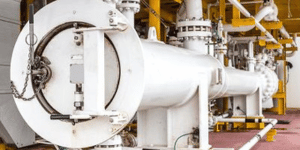.png)
The Scope
Our client was considering the mothballing of an oil production pipeline network within a North Sea field, including a number of multiphase, inter-platform pipelines and a trunkline to shore. We were requested to investigate the preparatory activities and indicative schedules that would be involved.
The Solution
The principal considerations for the pipelines were regarding their internal condition and operability on restart. The condition assessment was focussed on the potential for internal corrosion under low/no flow conditions. In such an environment, the potential for corrosion products being stripped from the pipe wall and the replenishment of corrosive agents is reduced. However, the potential for microbial induced corrosion (MIC) increases, and under-deposit exacerbated corrosion rates remains possible.
The operability threat arises due to the presence of wax within the crude oil. There are two aspects to these flow assurance concerns, the first being the formation of solid wax crystals within the pipeline which can clump together to form blockages. The second aspect is the increased resistance to flow upon restart due to the ‘gelling’ effect of the cold crude oil.
We identified the expected corrosion mechanisms and rates if the pipeline contents were left untreated, and the relative risk ranking of the different pipelines. To mitigate these threats we provided a number of potential treatment plans, including flushing, cleaning using pigs, and chemical treatment without de-oiling. We also recommended appropriate chemical treatments that should be considered and the required volumes to be considered a kill dose.
Considering the various pour points of the crude oil produced at each asset, we proposed a number of suitable wax inhibitors/ dispersants that would facilitate pipeline restart after a period of several years, and provided suitable injection locations to give optimal performance of the treatment.
We also identified suitable vendors for proving the chemicals and recommended the chemical compatibility tests that needed to be carried out in order to demonstrate the proposed treatments were viable.
The Benefits
We provided a fast response to the emerging requirements for the operator and a highly-tailored solution to facilitate optimal treatment for the network of assets within the required timescale.




.png)
.png)